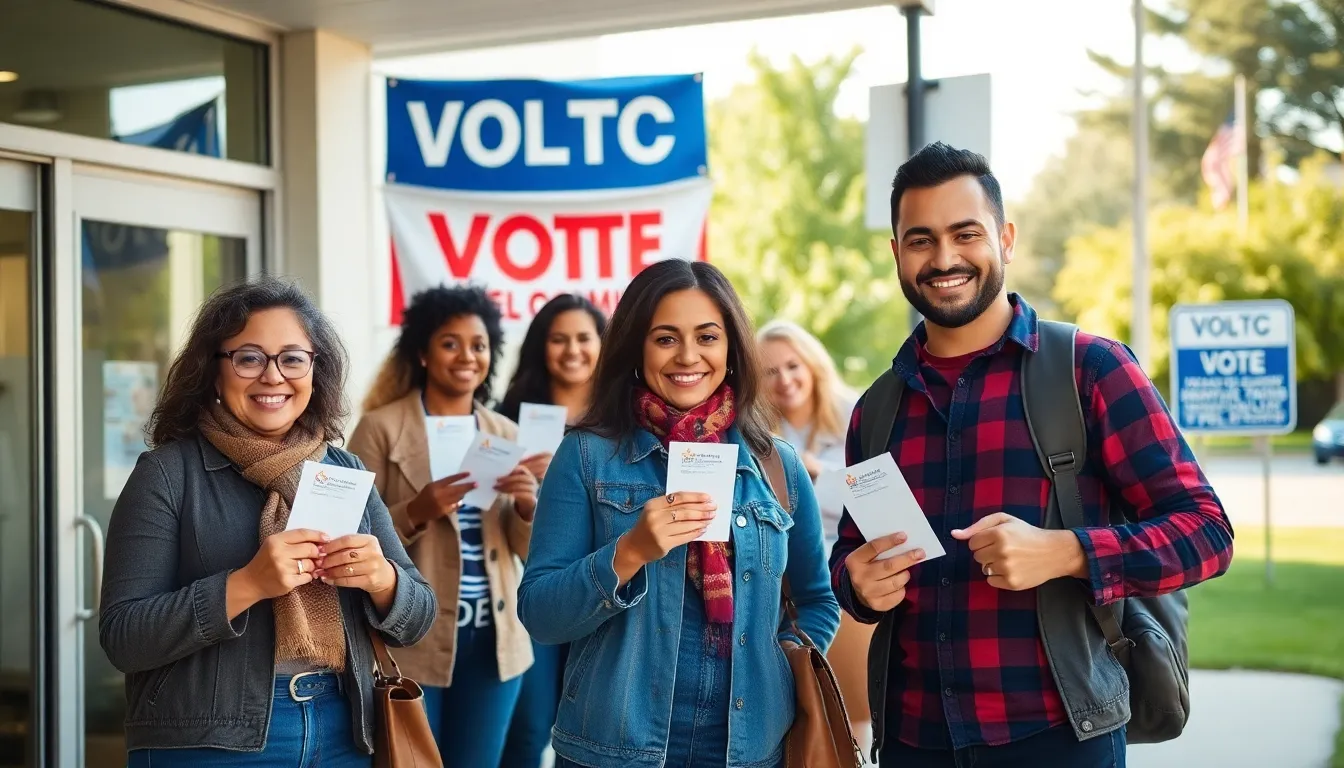Table of Contents
ToggleFinding a place to vote shouldn’t feel like searching for a needle in a haystack. With elections around the corner, knowing where to cast that all-important ballot is crucial. After all, your vote is your voice, and it deserves a worthy stage. So why not make it easy and fun?
Understanding Voting Locations
Knowledge of voting locations influences access to voting. A polling place serves as the designated site where registered voters can cast their ballots. Identifying nearby locations simplifies the voting process, ensuring that individuals can participate actively in elections.
Registered voters locate polling places through various means. They can visit state election office websites featuring tools for finding specific locations based on home addresses. Local government websites also provide up-to-date information about where to vote.
Accessibility matters when considering voting locations. Polling places should accommodate individuals with disabilities. Many states ensure that facilities comply with accessibility standards, making voting inclusive for everyone.
Operating hours vary by state, affecting when voters can cast their ballots. Some locations open as early as 6 AM, while others might not open until 9 AM. Checking the hours in advance prevents confusion on election day.
Voters should also consider the type of polling location. Some locations may serve as early voting sites or absentee ballot drop-off points. Understanding the differences assists voters in choosing the most convenient option for their needs.
Communication with local election officials proves valuable. Officials often provide assistance navigating the voting process and clarifying polling place details. Additionally, they offer insight into any changes or updates regarding voting locations.
By knowing these aspects, voters can ensure their voices are heard in the election process. Keeping informed about polling places increases voter participation and strengthens democracy.
How to Find Polling Places

Finding polling places requires access to reliable resources. Several tools help voters locate their designated voting sites easily.
Online Resources
State election office websites serve as primary sources for polling place information. Local government websites also provide details about where to vote. Many sites include search tools that allow users to input their address, instantly displaying their polling locations. Additional reputable sources, such as Vote.org, enhance access to up-to-date voting details. Users can also review information on voting hours, accessibility options, and necessary identification requirements.
Mobile Applications
Mobile applications streamline the process of finding polling places. Apps like Vote.org and Ballotpedia allow users to enter their address and identify nearby locations. These applications often provide information on ballot contents and voting methods, improving the overall voting experience. Notifications about upcoming elections help users stay informed. Furthermore, some acknowledge accessibility features, ensuring all voters can participate.
Importance of Voting Close to Home
Voting close to home simplifies the process, making it easier for individuals to participate in elections. Accessing a nearby polling place reduces travel time, encouraging higher turnout rates. Informed voters understand the significance of locating these sites as they directly impact the ability to cast a ballot. Particularly for individuals with disabilities, accessible polling locations enhance voting experiences.
Knowing local polling hours ensures voters can plan their schedules effectively. Variations in hours between states can pose challenges, so being informed minimizes complications. Understanding the types of polling locations, such as early voting sites or absentee ballot drop-off points, provides flexibility to voters.
Utilizing mobile applications like Vote.org and Ballotpedia streamlines this process, delivering real-time information on polling locations. These resources also offer insights into ballot contents and various voting methods. Engaging with local election officials can further clarify any uncertainties regarding the voting process, ensuring voters stay well-informed.
By prioritizing proximity to polling places, individuals increase their likelihood of participating in democracy. Awareness of these factors not only fosters higher voter turnout but strengthens the foundation of democratic engagement. Voters empowered by knowledge enhance the electoral process, thereby amplifying their voices in shaping community and national outcomes.
Preparing for Election Day
Being ready for Election Day enhances the voting experience. Knowing what to bring and understanding polling hours and restrictions ensures a smooth process.
What to Bring
Voters must bring valid identification to the polling place. Acceptable forms of ID include driver’s licenses, state-issued IDs, and passports. In some states, voters may need to show proof of residency, such as a utility bill or bank statement. It’s advisable to check specific state requirements beforehand. Being prepared with necessary documents avoids any issues during voting.
Polling Hours and Restrictions
Polling hours can vary widely across states. Many locations open between 6 AM and 8 AM and close between 7 PM and 9 PM. States often allow voters to cast ballots on weekends and during early voting periods. Some restrictions may apply based on local regulations. Checking the local election office for detailed polling hours and any applicable restrictions helps ensure voters can cast their ballots without difficulty.
Knowing where to vote is essential for every voter. By utilizing available resources like state election websites and mobile apps, individuals can easily find their nearest polling places. Staying informed about polling hours and accessibility options ensures a smoother voting experience.
Engaging with local election officials can clarify any uncertainties and provide up-to-date information. Ultimately, being prepared and aware of voting logistics not only simplifies the process but also encourages greater participation in elections. Empowering oneself with this knowledge is a crucial step toward making a meaningful impact in the democratic process.







